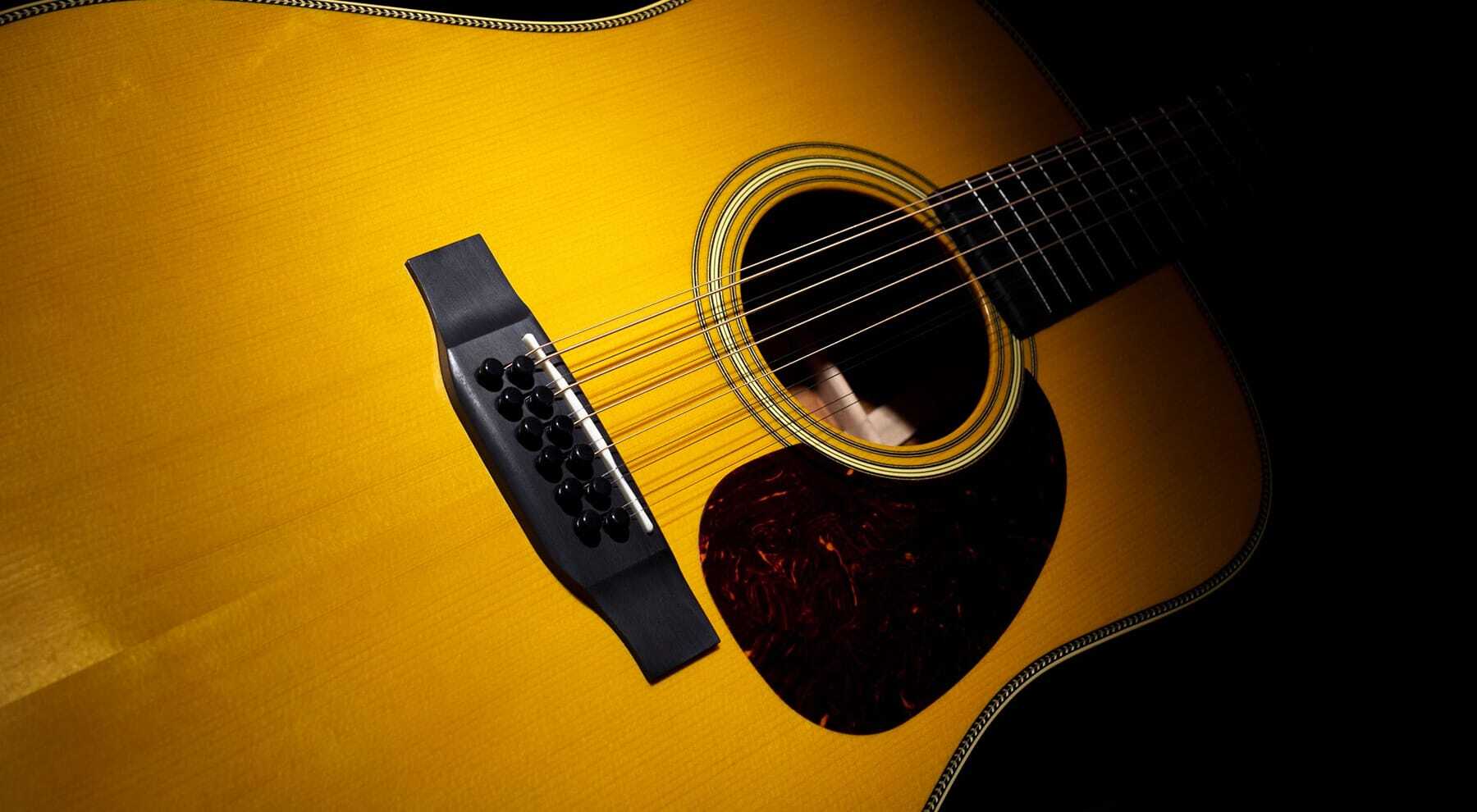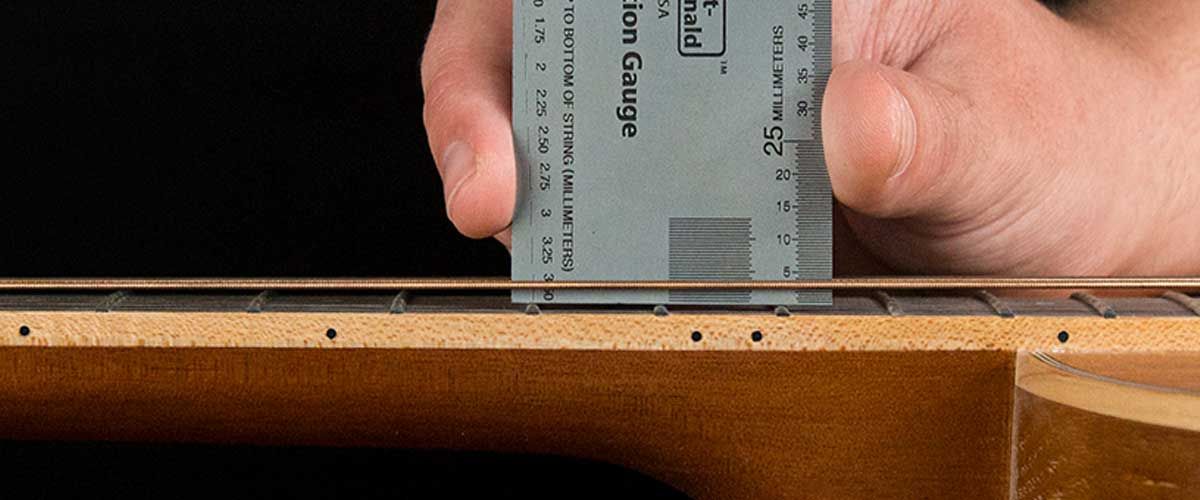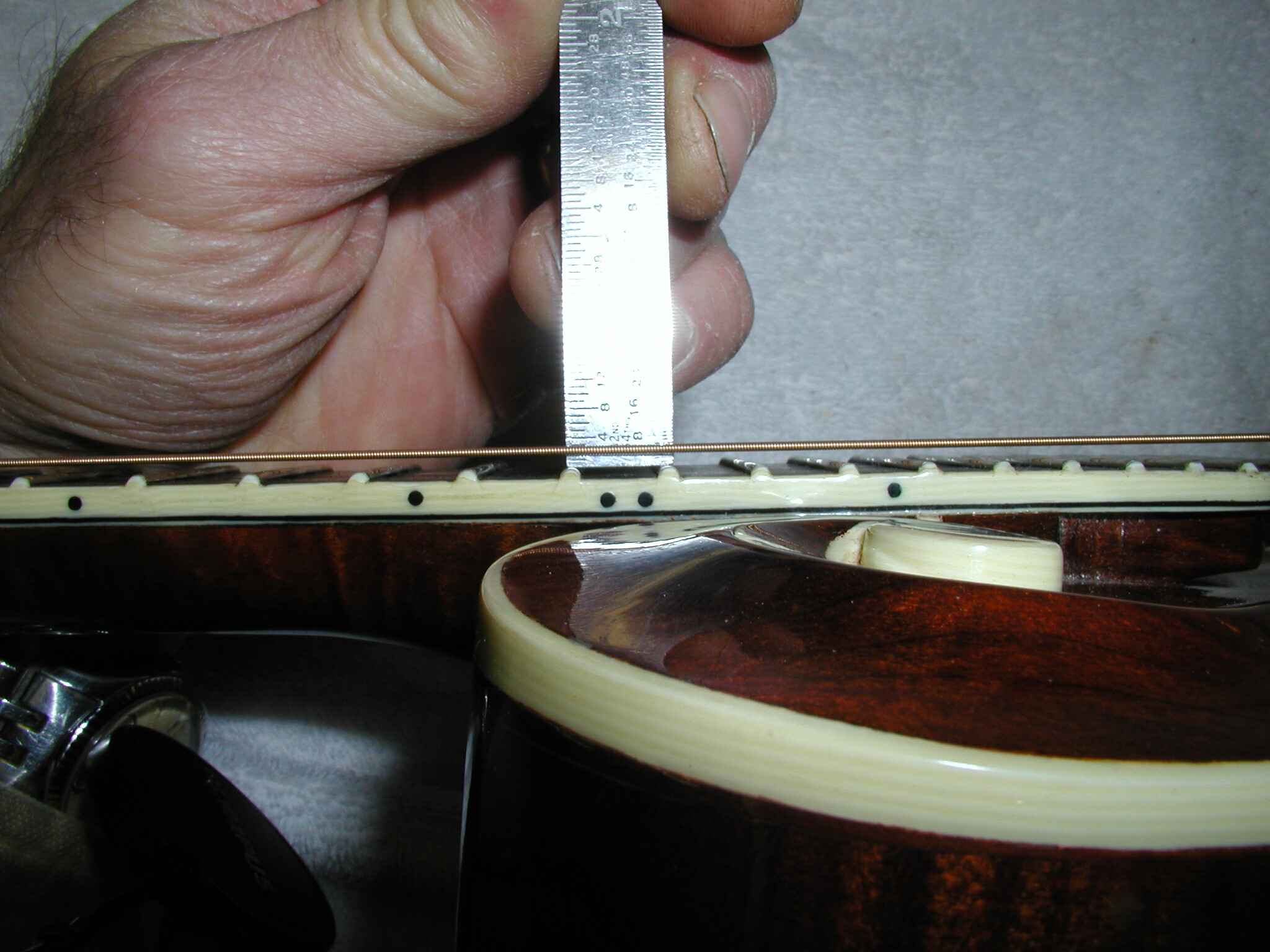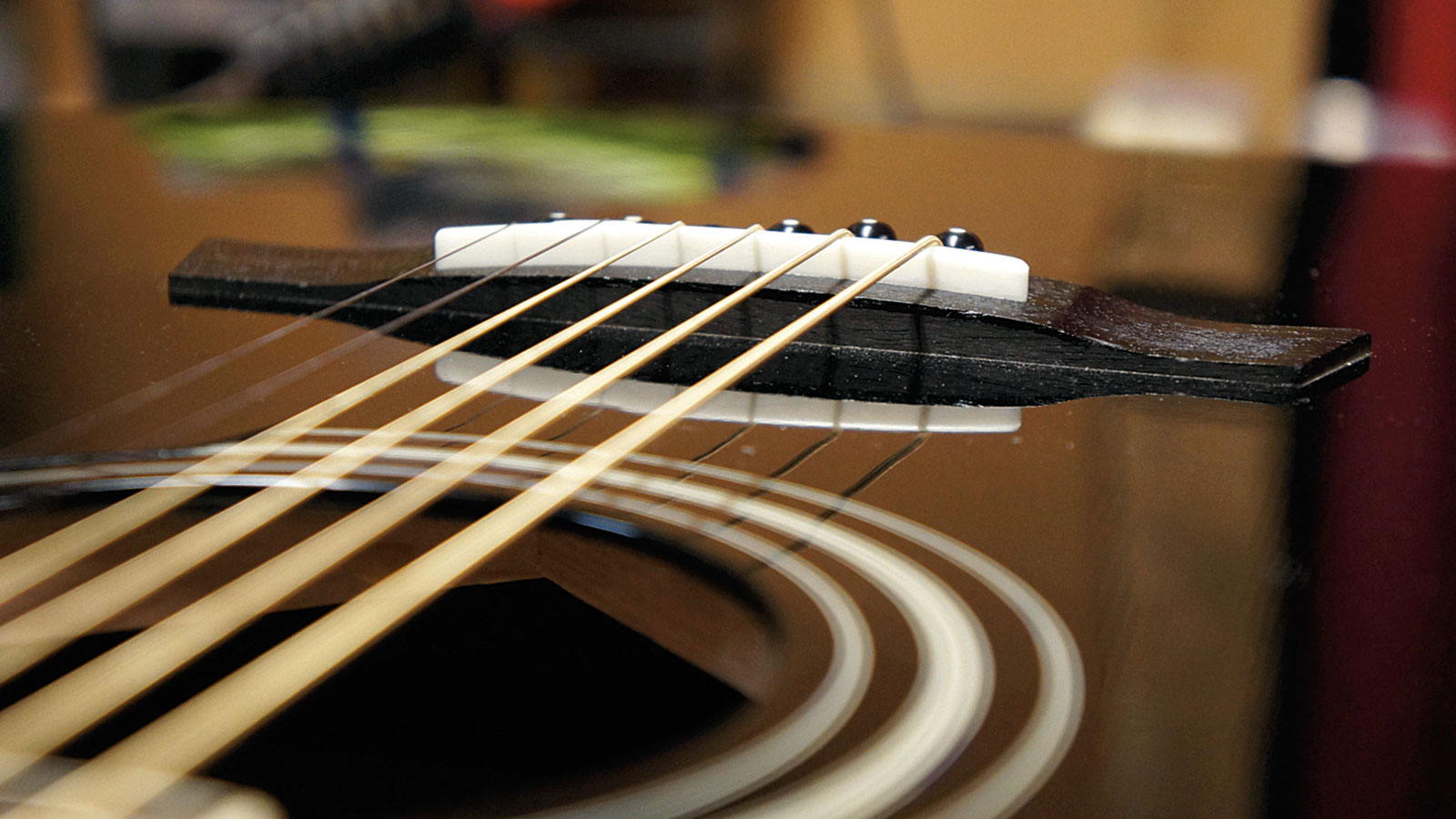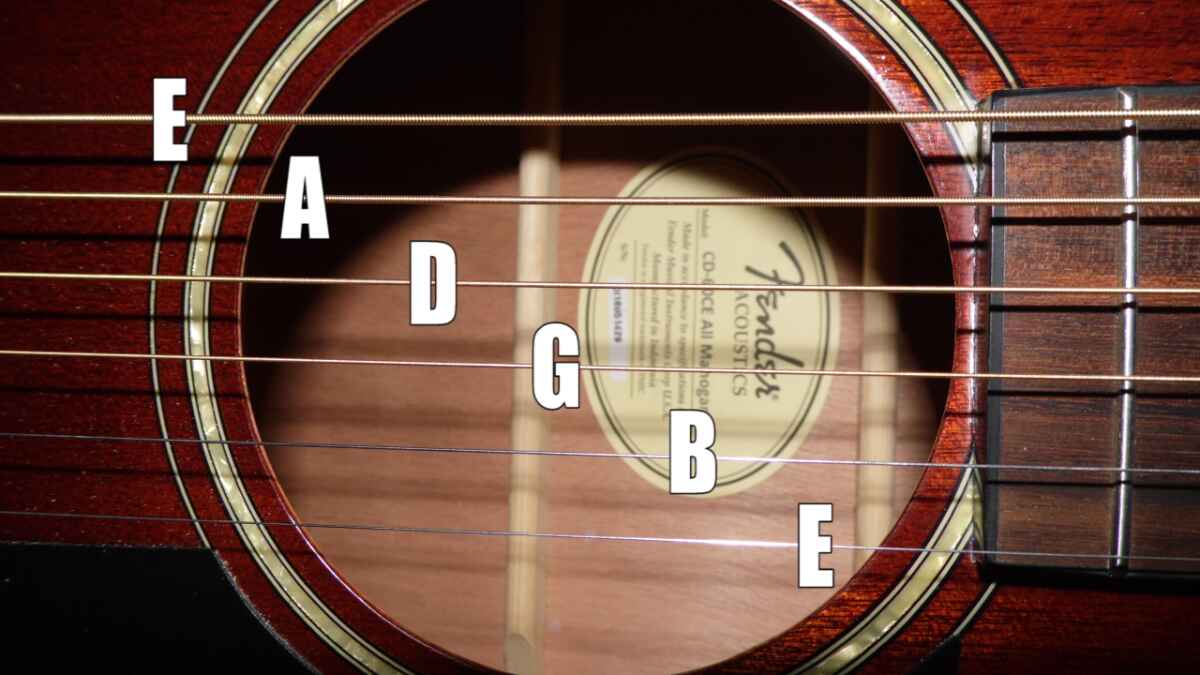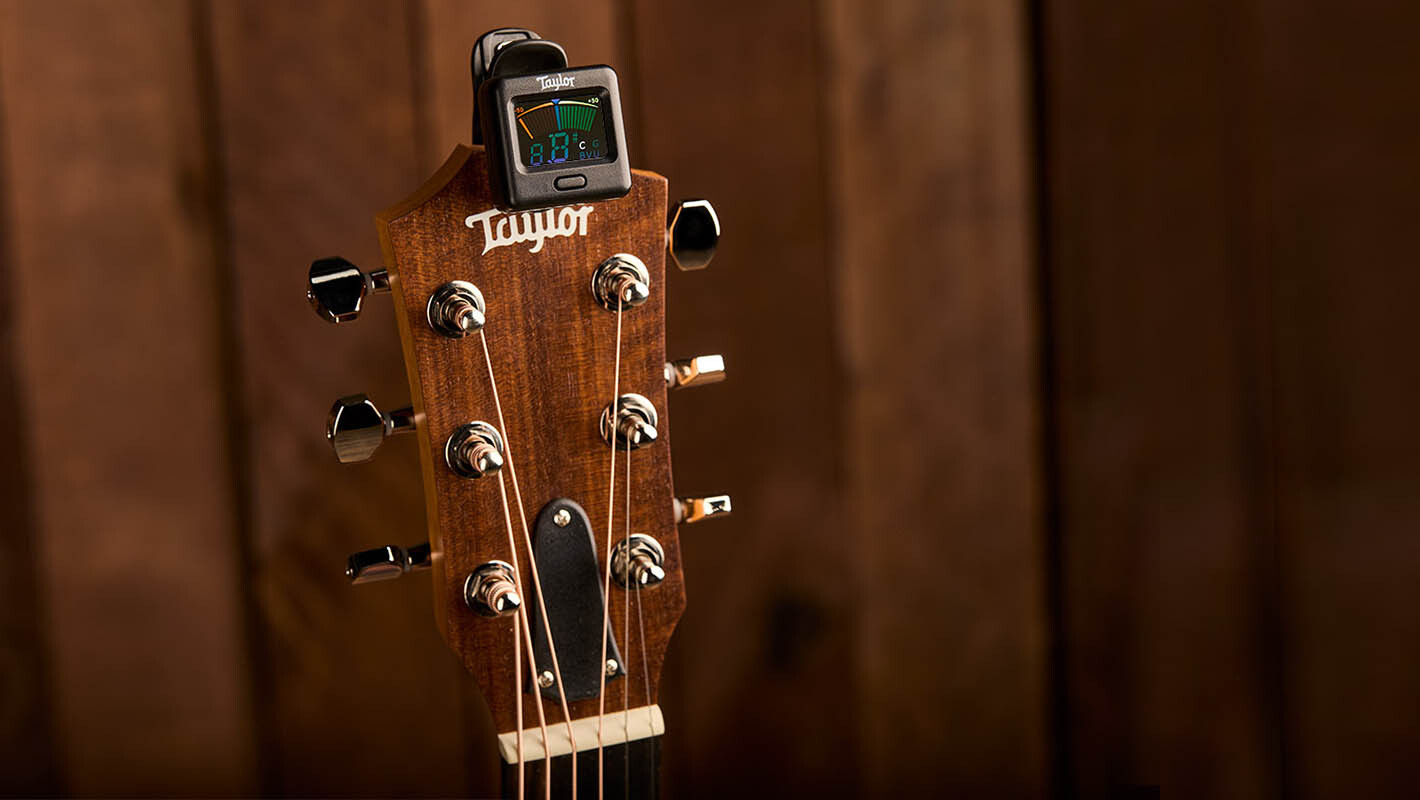Introduction
The 12-string acoustic guitar is a beautiful and unique instrument that adds depth and richness to your musical compositions. Whether you’re a beginner or an experienced guitarist, understanding how to tune a 12-string acoustic guitar is essential for achieving the best sound quality and playing experience.
In this article, we will walk you through the process of tuning a 12-string acoustic guitar, from understanding the anatomy of the instrument to choosing the right strings and exploring different tuning methods. We will also provide tips for maintaining the tuning stability of your guitar, ensuring that your instrument stays in tune for longer periods.
Before we dive into the specifics of tuning, it’s important to understand the unique anatomy of a 12-string acoustic guitar. Unlike the traditional 6-string guitar, a 12-string guitar has six pairs of strings. Each pair consists of a higher-pitched string and a lower-pitched string. This configuration gives the guitar its distinctive sound and adds depth and complexity to your playing.
Now that you have an overview of what we’ll be covering, let’s move on to the next section where we’ll discuss the importance of choosing the right strings for your 12-string acoustic guitar.
Understanding the Anatomy of a 12-String Acoustic Guitar
Before you start tuning your 12-string acoustic guitar, it’s important to familiarize yourself with its unique anatomy. While it may look similar to a standard 6-string guitar, there are some key differences you should know about.
Firstly, a 12-string guitar has six pairs of strings, as opposed to the usual six individual strings on a regular guitar. Each pair consists of a thinner string and a thicker string tuned to the same note. The thinner string is known as the octave string, and the thicker string is called the unison string. This pairing creates a doubled-up effect, giving the 12-string guitar its signature rich and full sound.
When it comes to string names, the pairs are usually identified by numbers. The first pair is the topmost string, also known as the high E or the first string. Moving downwards, you’ll encounter pairs labeled as 2nd, 3rd, 4th, 5th, and 6th. The highest-pitched string in each pair is typically located on the left side of the headstock.
One important thing to remember is that when you pluck a string, you’re actually playing both the octave string and the unison string simultaneously. This double-string setup requires a slightly different approach to tuning and maintenance compared to a 6-string guitar.
Another aspect to consider is the neck width of a 12-string guitar. Due to the additional strings, the neck is wider than that of a standard guitar. This wider neck allows for more finger placement options, but it can take some time to adjust if you’re used to playing a 6-string guitar.
By understanding the unique anatomy of a 12-string acoustic guitar, you can better appreciate its distinct sound and nuances. Now that you’re familiar with the basics, let’s move on to the next section, where we’ll discuss the importance of choosing the right strings for your 12-string guitar.
Choosing the Right Strings for Your 12-String Acoustic Guitar
When it comes to achieving the best sound and playability on your 12-string acoustic guitar, choosing the right strings is crucial. The strings you select will greatly impact the tone, feel, and overall quality of your instrument’s sound.
Before purchasing new strings, consider the gauge and material that will suit your playing style and preferences. Gauge refers to the thickness of the strings, and it can greatly affect the tension and overall feel of the guitar. Lighter gauge strings are generally easier to play, but they may sacrifice some depth and volume. On the other hand, heavier gauge strings provide a fuller tone but can be more challenging to fret and bend.
When it comes to materials, there are various options available, including bronze, phosphor bronze, and coated strings. Bronze strings are the most common and offer a balanced tone with a bright sound. Phosphor bronze strings, on the other hand, have a warmer tone, which can be desirable for certain styles of music. Coated strings, such as those with a polymer coating, last longer and resist corrosion, ensuring a longer lifespan for your strings.
Experimenting with different string combinations can help you find the right balance of tone and playability for your 12-string acoustic guitar. It’s worth noting that each guitar is unique, so what works for one instrument may not work for another. Consider trying different brands and gauges to discover the strings that provide the sound and feel you desire.
Additionally, regular string maintenance is essential for preserving the quality and longevity of your strings. Wipe down your strings with a clean cloth after each playing session to remove dirt, sweat, and oils that can degrade the strings’ sound and playability. By properly caring for your strings, you can extend their lifespan and maintain a consistent and vibrant tone.
Now that you’re equipped with the knowledge of choosing the right strings for your 12-string acoustic guitar, in the next section, we will guide you through the process of preparing the guitar for tuning.
Preparing the Guitar for Tuning
Before you start tuning your 12-string acoustic guitar, it’s essential to ensure that the instrument is properly set up and in good condition. Taking a few minutes to prepare the guitar will help you achieve accurate and stable tuning.
The first step in preparing your guitar for tuning is to check the overall condition of the instrument. Look for any visible damages or issues, such as cracks, loose braces, or warped neck. If you spot any major problems, it’s recommended to have your guitar inspected and repaired by a professional before attempting to tune it.
Next, inspect the tuning pegs or machine heads, which are responsible for adjusting the tension of the strings. Ensure that they are securely in place and not loose or wobbly. Tighten any loose tuning pegs using a screwdriver or by hand to ensure they function properly and hold the strings in tune.
Once the tuning pegs are secure, check the condition of the strings themselves. Look for any signs of wear, corrosion, or discoloration. If your strings appear worn or dull, it’s a good idea to replace them with a fresh set before tuning. Old strings can make it difficult to achieve accurate tuning and may produce a dull or muted sound.
Lastly, give your guitar a quick clean to remove any dirt, dust, or residue that may have accumulated on the body, neck, or fretboard. Use a soft cloth or guitar cleaning product to gently wipe down the surfaces. This not only keeps your guitar looking and feeling fresh but also helps prevent any buildup that may affect the strings’ vibration and tuning stability.
By ensuring that your guitar is in good condition and properly set up before tuning, you’ll have a solid foundation for achieving accurate and consistent tuning. With your guitar prepared, it’s time to explore the different tuning methods available for your 12-string acoustic guitar, which we’ll discuss in the next section.
Different Tuning Methods for a 12-String Acoustic Guitar
When it comes to tuning a 12-string acoustic guitar, there are several methods you can use to achieve the desired pitch and sound. Each tuning method offers a unique tonal palette and allows for different chord voicings and musical possibilities. Let’s explore some common tuning methods for 12-string guitars:
1. Standard Tuning: Just like a 6-string guitar, the standard tuning for a 12-string guitar is E-A-D-G-B-E, but with the added pairs of strings. This tuning provides a familiar and balanced sound, allowing you to play your favorite songs and chords with the added richness of the doubled strings.
2. Open Tunings: Open tunings are popular among slide guitar players but can also be used with fingerstyle playing. In open tunings, when strummed without fretting any strings, you produce a chord. Common open tunings for 12-string guitars include Open D (D-A-D-F#-A-D), Open G (D-G-D-G-B-D), and Open C (C-G-C-G-C-E).
3. Drop-D Tuning: Drop-D tuning is commonly used in various musical genres, and it can be applied to a 12-string acoustic guitar as well. The 6th pair of strings is tuned down to a D, providing a low and powerful bass note that adds depth and versatility to your playing.
4. Alternate Tunings: Experimenting with alternate tunings can yield unique and captivating sounds. Some popular alternate tunings for 12-string guitars include DADGAD (D-A-D-G-A-D) and Open E (E-B-E-G#-B-E). These tunings allow for different chord voicings and open up new creative possibilities.
When choosing a tuning method, consider the musical style you’re playing, the desired sound you want to achieve, and your personal preferences. Each tuning method has its own characteristics and opens up a world of possibilities for crafting memorable melodies and harmonies on your 12-string acoustic guitar.
Now that you’re familiar with different tuning methods, let’s explore how to tune your 12-string acoustic guitar using an electronic tuner, which we’ll cover in the next section.
Tuning the Guitar Using an Electronic Tuner
An electronic tuner is a convenient and accurate tool for tuning your 12-string acoustic guitar. It helps ensure that each string is tuned to the correct pitch, resulting in a harmonious and well-balanced sound. Here’s how to use an electronic tuner to tune your guitar:
1. Connect the tuner: Most electronic tuners have a built-in microphone or an input jack to connect your guitar. If using the microphone, hold the tuner close to your guitar’s soundhole. If using the input jack, plug your guitar into the tuner using a standard instrument cable.
2. Turn on the tuner: Press the power button to turn on the tuner. Make sure the tuner is set to the appropriate mode for a 12-string guitar.
3. Play the open strings: Starting with the 6th pair of strings, pluck the strings one by one without fretting any notes. Watch the tuner’s display for the visual indication of each string’s pitch.
4. Adjust the tuning pegs: If the tuner shows that a string is flat (too low in pitch), tighten the corresponding tuning peg to raise the pitch. If the string is sharp (too high in pitch), loosen the tuning peg to lower the pitch. Repeat this process for all strings, making small adjustments as needed.
5. Check the octave strings: Since 12-string guitars have octave strings, it’s important to ensure that each pair is in tune. The tuner should display the same note for both strings in each pair. If they are slightly off, adjust them until they match.
6. Verify the tuning: After tuning all the strings, play a few chords or notes to verify the overall tuning. If any particular strings sound off, fine-tune them until the entire instrument is in harmony.
Remember to pluck the strings gently when tuning, allowing the tuner to properly register the pitch. Also, it’s important to frequently check the overall tuning of the guitar, as strings can gradually go out of tune due to temperature changes, playing, or other factors.
Tuning your 12-string acoustic guitar using an electronic tuner is a reliable and convenient method, especially for achieving precise and accurate tuning. In the next section, we’ll explore an alternative method called tuning the guitar using a reference pitch.
Tuning the Guitar Using a Reference Pitch
If you don’t have access to an electronic tuner, tuning your 12-string acoustic guitar using a reference pitch is a useful alternative. This method involves using a reference pitch, such as a piano, a tuning fork, or a tuning app, to tune your guitar’s strings. Here’s how to tune your guitar using a reference pitch:
1. Obtain a reference pitch: Start by finding a reliable reference pitch, such as a keyboard or piano key, a tuning fork, or a tuning app on your smartphone or computer. Ensure that the reference pitch is accurately tuned.
2. Tune the lower octave strings: Begin by tuning the lower octave strings of each pair. Play the reference pitch and, while it rings out, pluck the corresponding lower octave string on your guitar. Adjust the tuning peg until the guitar string matches the pitch of the reference note.
3. Tune the higher octave strings: Once the lower octave strings are in tune, pluck the corresponding higher octave strings for each pair. Using the reference pitch as a guide, adjust the tuning peg of each higher octave string to match the pitch of the reference note.
4. Verify the tuning: After tuning all the strings, check the overall tuning by playing a few chords or notes. If anything sounds off, make small adjustments to fine-tune the guitar until it sounds balanced and harmonious.
It’s important to note that tuning with a reference pitch may require some trial and error, especially if you’re new to this method. Take your time and listen carefully to match the pitch as closely as possible. It can be helpful to compare the sound of each string to its neighboring string in the pair to ensure they are in tune with each other.
While using a reference pitch may not provide the same level of precision as an electronic tuner, it is a practical solution when one is not available. Remember to regularly check the tuning of your guitar, as strings can gradually go out of tune due to various factors.
In the next section, we’ll cover an alternative method for tuning your 12-string acoustic guitar by ear.
Tuning the Guitar by Ear
Tuning your 12-string acoustic guitar by ear is a skill that can be developed with practice and a good musical ear. While it may take time to master, this method allows you to tune your guitar anywhere, without the need for additional tools. Here’s how to tune your guitar by ear:
1. Start with a reference pitch: Begin by establishing a reference pitch. This can be a keyboard, a tuning fork, another tuned instrument, or even an online reference pitch available on certain websites or mobile apps. Make sure the reference pitch is accurately tuned.
2. Tune the lower strings: Pluck the lower octave string for each pair while listening to the corresponding reference pitch. Without fretting any notes, adjust the tuning peg of the lower octave string until it matches the pitch of the reference note.
3. Tune the higher strings: Once the lower strings are tuned, pluck the higher octave string of each pair. Use your ear to adjust the tuning peg until the higher octave string matches the pitch of the reference note. Pay attention to the interval between the lower and higher strings to ensure they are in sync.
4. Verify the tuning: After tuning all the strings, play a few chords or notes to confirm the overall tuning. Listen for any inconsistencies or dissonance and make slight adjustments as needed to achieve a balanced and harmonious sound.
Tuning by ear requires a trained musical ear and a good understanding of relative pitch. It may take some time before you can consistently tune your guitar accurately using this method. Practice listening to the intervals between strings and training your ear to recognize when two notes are in tune with each other.
While tuning by ear can be challenging at first, it is a valuable skill to develop as a guitarist. With practice, you’ll become more attuned to the nuances of your instrument’s sound and be able to tune your 12-string acoustic guitar accurately in any situation.
Now that you’ve learned how to tune your guitar by ear, the next section will provide tips for maintaining the tuning stability of your 12-string acoustic guitar.
Maintaining the Tuning Stability of Your 12-String Acoustic Guitar
Keeping your 12-string acoustic guitar in tune is essential for an enjoyable playing experience. Here are some tips to help maintain the tuning stability of your instrument:
1. Stretch the strings: New strings, especially those with a higher gauge, can take time to settle in and hold their pitch. Stretching the strings by gently pulling and bending them can help expedite the process. Tune your guitar, then carefully pull up on each string at various points along its length, and re-tune as necessary. Repeat this process until the strings hold their tuning consistently.
2. Lubricate the nut and saddle: Friction at the nut and saddle can cause strings to stick and go out of tune. Apply a small amount of graphite or specialized nut lubricant in the grooves of the nut and saddle to reduce friction. This allows the strings to glide smoothly, keeping them in tune for longer periods.
3. Avoid extreme temperature and humidity changes: Rapid changes in temperature and humidity can cause the wood to expand or contract, affecting the tension on the strings and leading to tuning instability. Try to store your guitar in a controlled environment and avoid leaving it exposed to extreme conditions.
4. Check the tuning pegs: Over time, tuning pegs can become loose or worn, resulting in unstable tuning. Regularly inspect the pegs and tighten any loose screws or nuts. If the pegs are damaged or not holding the strings securely, consider replacing them with high-quality, reliable tuning pegs.
5. Properly wind the strings: When restringing your guitar, make sure to wind the strings neatly and securely around the tuning pegs. Avoid excessive overlapping or loose winding, as this can cause slippage and tuning issues. Use the appropriate technique to ensure a smooth and tight wrap around the pegs.
6. Regularly tune and check the strings: Even if you haven’t been playing your guitar, strings can gradually go out of tune. It’s important to regularly tune and check the tuning of your strings. A quick tune-up before each playing session can help maintain the stability of your guitar’s tuning.
By following these tips and implementing good maintenance practices, you can ensure that your 12-string acoustic guitar stays in tune for longer periods, providing you with a consistent and enjoyable playing experience.
Now that you have learned how to maintain the tuning stability of your guitar, let’s conclude this guide on tuning a 12-string acoustic guitar.
Conclusion
Tuning a 12-string acoustic guitar is a crucial skill for every guitarist who wishes to achieve the best sound and playability from their instrument. Understanding the unique anatomy of a 12-string guitar, choosing the right strings, and properly preparing the guitar for tuning are essential steps in the process.
We explored different tuning methods, including using an electronic tuner, a reference pitch, and tuning by ear. Each method offers its own benefits and can be used based on personal preference and availability of tools. Experimenting with different tunings allows you to explore a wide range of tonal possibilities and open up new creative avenues.
To maintain the tuning stability of your 12-string acoustic guitar, regular maintenance and good practices are vital. Stretching the strings, lubricating the nut and saddle, avoiding extreme temperature changes, and properly winding the strings help keep your guitar in tune for longer periods.
Whether you’re a beginner or an experienced guitarist, developing the ability to tune your 12-string acoustic guitar is an essential skill to enhance your playing experience. With regular practice and attention to detail, you’ll be able to achieve the rich, harmonious sounds that make the 12-string acoustic guitar such a captivating instrument.
So, take the time to explore the different tuning methods, find your favorite tunings, and enjoy the unique sounds that you can create with your 12-string acoustic guitar. Keep it well-maintained and regularly tuned, and unleash the full potential of this remarkable instrument.







